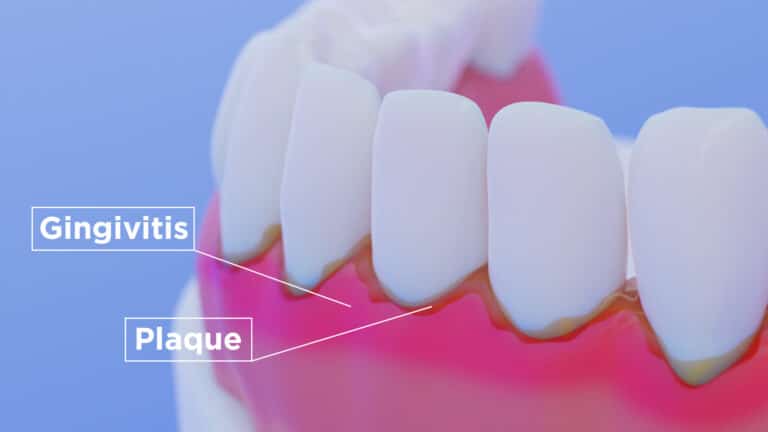Gingivitis is a common and mild form of gum disease that causes irritation, redness, and swelling of your gingiva. The gingiva is the part of your gum around the base of your teeth. It’s important to take gingivitis seriously and treat it promptly so it doesn’t lead to more serious gum disease.
The most common cause of gingivitis is poor oral hygiene that encourages plaque to form on teeth, causing inflammation of the surrounding gum tissues.
- Plaque forms on your teeth: Plaque is an invisible, sticky film composed mainly of bacteria that forms on your teeth when starches and sugars in food interact with bacteria normally found in your mouth. Plaque requires daily removal because it re-forms quickly.
- Plaque turns into tartar: Plaque that stays on your teeth can harden under your gumline into tartar, which collects bacteria. Tartar makes plaque more difficult to remove, creates a protective shield for bacteria, and causes irritation along the gumline. You need professional dental cleaning to remove tartar.
- Gingiva becomes inflamed (gingivitis): The longer that plaque and tartar remain on your teeth, the more they irritate the gingiva, the part of your gum around the base of your teeth, causing inflammation. In time, your gums become swollen and bleed easily. If not treated, gingivitis can advance to periodontitis and eventual tooth loss.
Good oral health habits, such as brushing at least twice a day, flossing daily, and getting regular dental checkups, can help prevent and reverse gingivitis.
-
- Good oral hygiene: That means brushing your teeth for two minutes at least twice daily and flossing at least once a day. Flossing before you brush allows you to clean away the loosened food particles and bacteria.
- Regular dental visits: See your dentist or dental hygienist regularly for cleanings. If you have risk factors that increase your chance of developing periodontitis such as having dry mouth, taking certain medications or smoking — you may need professional cleaning more often. Annual dental X-rays can help identify diseases that are not seen by a visual dental examination and monitor for changes in your dental health.
- Good health practices: Practices such as healthy eating is important to maintain gum health.
Healthy gums are firm and pale pink and fitted tightly around the teeth. Signs and symptoms of gingivitis include:
- Swollen or puffy gums
- Dusky red or dark red gums
- Gums that bleed easily when you brush or floss
- Bad breath
- Receding gums
- Tender gums
When to see a dentist:
If you notice any signs and symptoms of gingivitis, schedule an appointment with your dentist. The sooner you seek care, the better your chances of reversing damage from gingivitis and preventing its progression. Contact us at Verber Family Dentistry!





